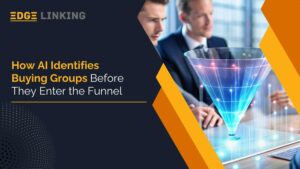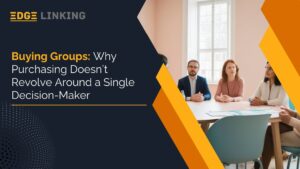For decades, marketers relied on the classic funnel model—awareness, interest, consideration, intent, and action. It offered structure, measurability, and a seemingly logical path from stranger to customer. But here’s the catch: real people don’t think, feel, or behave like that.
We’re not widgets in a machine. We’re unpredictable, emotional, distracted, and messy. We don’t go through steps. We wander, circle back, give up, come back. That’s why today, intelligent marketers are taking a step back to rediscover human behavior—not just via data, but via empathy.
Because let’s be honest: people aren’t funnels.
The Funnel Was Made for Brands—Not Buyers
Funnels are marketers’ work horses. They support the planning of campaigns, they provide metrics definition, and goals are formed from them. Yet no consumer gives pause and considers, “I am in the ‘consideration’ stage of this brand’s funnel.” We scroll carelessly, hop across apps, compare by habit, and usually shop by impulse.
This linear approach too greatly simplifies what’s really a fluid, emotional journey. And the louder the digital universe gets, it’s evident now: human beings don’t operate linearly.
Why Funnels Are Failing in a Human-Centric Era
Today, what some call the “experience economy”—brands are not just selling products. They’re selling identities, lifestyles, and values. Consumers want to feel seen and heard. They want to connect—not be corralled into a conversion path.
Let’s consider two real-world behaviors:
A customer finds a brand through a Spotify ad, visits the website, subscribes to emails, but doesn’t click anything for three months—then purchases out of the blue after watching some random YouTube review.
Another finds a friend’s Instagram Story, searches for the brand on Google, adds to cart, but then gets distracted by a meme—and never comes back.
Where in the funnel do these interactions belong? They don’t. Because life isn’t linear—and neither is consumer behavior.
Humans first make emotional choices and then justify them with logic. Even high-ticket purchases—such as high-end fashion or technology—are hardly “rational” purchases.
We buy because:
- It makes us feel secure
- It’s consistent with our identity
- It provides social standing
- It elicits nostalgia or happiness
That’s why savvy brands don’t sell features. They sell emotions.
Breaking up with the Funnel: What Are Brands Doing Instead?
Some marketers have adopted more adaptive models such as the flywheel—a cycle in which each satisfied customer fuels fresh growth. Others work within ecosystems, where a customer will arrive and depart in unexpected manners.
More than models, though, is a change in mentality. Rather than querying “What stage are they in?” the better question to ask is:
- What emotion are they experiencing?
- What problem are they attempting to solve?
- What experience are we providing right this second?
International Brands That Reset Human Behavior
Let’s consider how global brands are succeeding by abandoning the funnel and leaning into the emotional, messy reality of actual people:
1. Apple: Building Desire, Not Demand
Apple isn’t selling products—they’re selling status, ease, and potential. They market infrequently talking about technical detail. Instead, they create tension through gorgeous narratives, scarcity, and simplicity messages.
You never find Apple leading you down a funnel. They put their brand at the nexus of emotion, design, and culture, and let desire do the work.
2. IKEA: Designing for Real Life, Not Funnels
IKEA doesn’t try to jam hard-sell commercials or shove you down a buying path. They provide inspiration across all touchpoints—from showroom environments that simulate real homes to their social media “IKEA hacks” that go viral.
Through the study of how people really live, IKEA not only changes its marketing but its products. Its behavioral insights have resulted in solutions for limited space, eco-friendly options, and cultural requirements—placing people at the heart of every choice.
3. Netflix: Anticipating, Not Selling
Netflix doesn’t spam you with sales messages. Rather, they apply behavioral data to predict your next action. Their recommendation engine is based on your viewing habits, not a sales funnel.
Their social media isn’t promotional—it’s conversational. Memes, reactions, fandom culture—they become part of your life rather than pushing you down a predetermined path.
4. Patagonia: Values Over Virality
Patagonia’s marketing turns the page. They’ve instructed customers to not purchase new jackets. They’ve shut down their website on Black Friday. Why? Because they market with integrity and long-term trust, not a one-time sale.
Their customer isn’t buying equipment—they’re buying into a cause. This type of emotional buy doesn’t happen from a funnel. It happens from common beliefs and radical honesty.
5. LEGO: Building Communities, Not Just Toys
LEGO has evolved from a toy company into a worldwide community-builder. With fan contests, user-created designs, and partnerships with franchises such as Star Wars or Adidas, they welcome people into their system imaginatively and emotionally.
They don’t lead customers through a journey. They give them the bricks—and they get to build their own.
6. Airbnb: Selling Belonging
Airbnb didn’t scale by simply displaying homes. They shared stories of belonging, cultural exchange, and adventure. Their “Live There” campaign invited people to feel local—not tourist.
By emphasizing human experiences over booking flow, Airbnb transformed the way we travel and trust strangers.
What Marketers Should Do Differently Now
If people aren’t flowing through funnels, how should we market?
1. Map Moments, Not Stages
Consider where your brand touches a person’s life—not where they are in a path of conversion. Are they driving to work, doom-scrolling in bed, stoked about a trip, or stressed out at the office?
2. Create for Curiosity and Feeling
Employ storytelling, relatability, and humor to construct emotional hooks. If your message doesn’t incite a feeling, it’s not memorable.
3. Release Control
Marketing is no longer a matter of managing the trip. It’s about value creation at each point of interaction—even if you don’t own the path.
4. Design for Community, Not Just Conversion
Belonging builds loyalty. Make community features possible, amplify user voices, and empower user engagement.
What to Measure Instead of Funnel Stages
If you’re willing to leave the funnel behind, here’s what to measure instead:
- Engagement Quality: Saves, shares, replies—not just clicks
- Customer Sentiment: What are people saying about you?
- Time Spent with Brand: Not only on-site, but everywhere
- Repeat Interactions: Repeat visits, repeat engagement, referrals
- Emotional Impact: Brand impression, recall of stories
The Future Is Human-First, Not Funnel-First
With automation and AI becoming increasingly intelligent, ironically, the winners will be the brands that behave more human. The ones who know not only what people do—but why.
We don’t have to discard structure. But we must rebuild it around actual behavior, not perfect paths.
Because ultimately, people aren’t leads to be captured.
They’re human beings to be understood.






